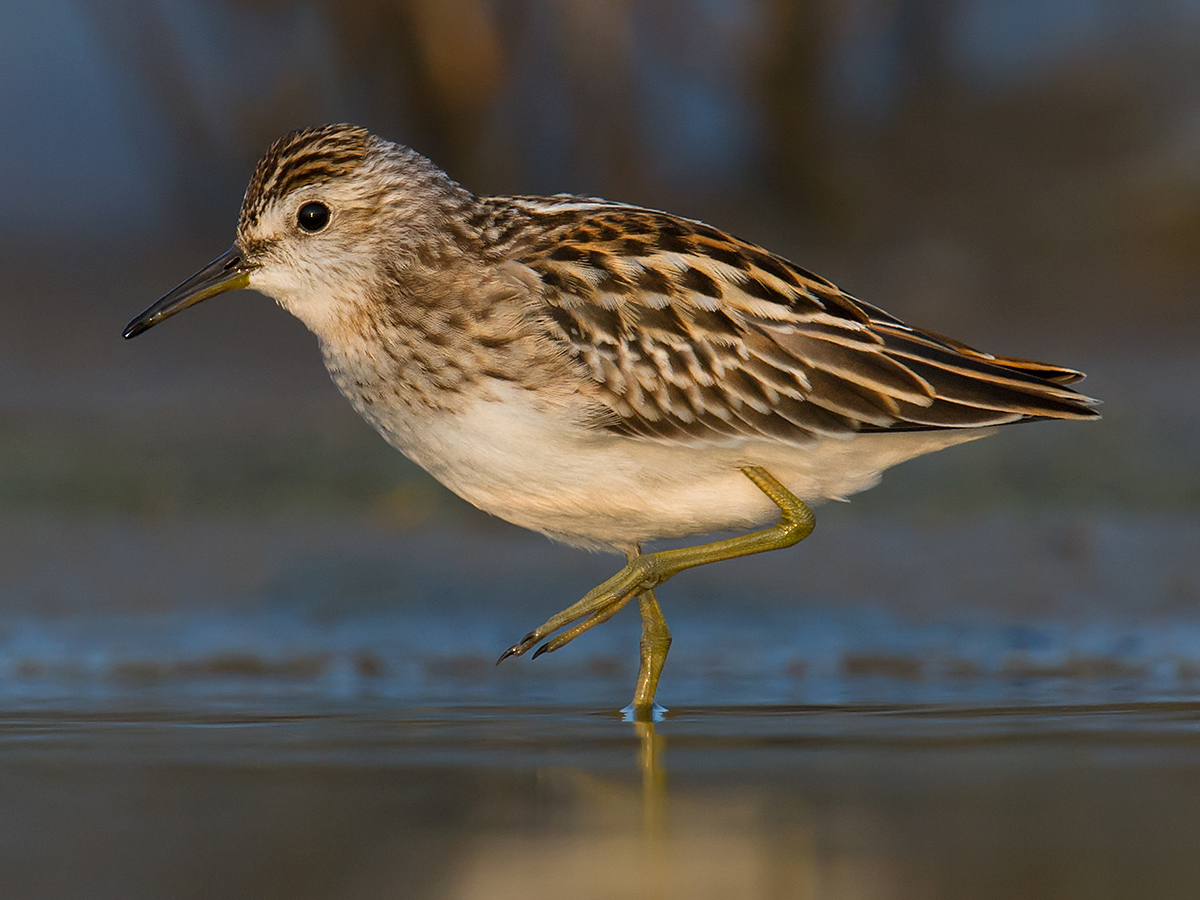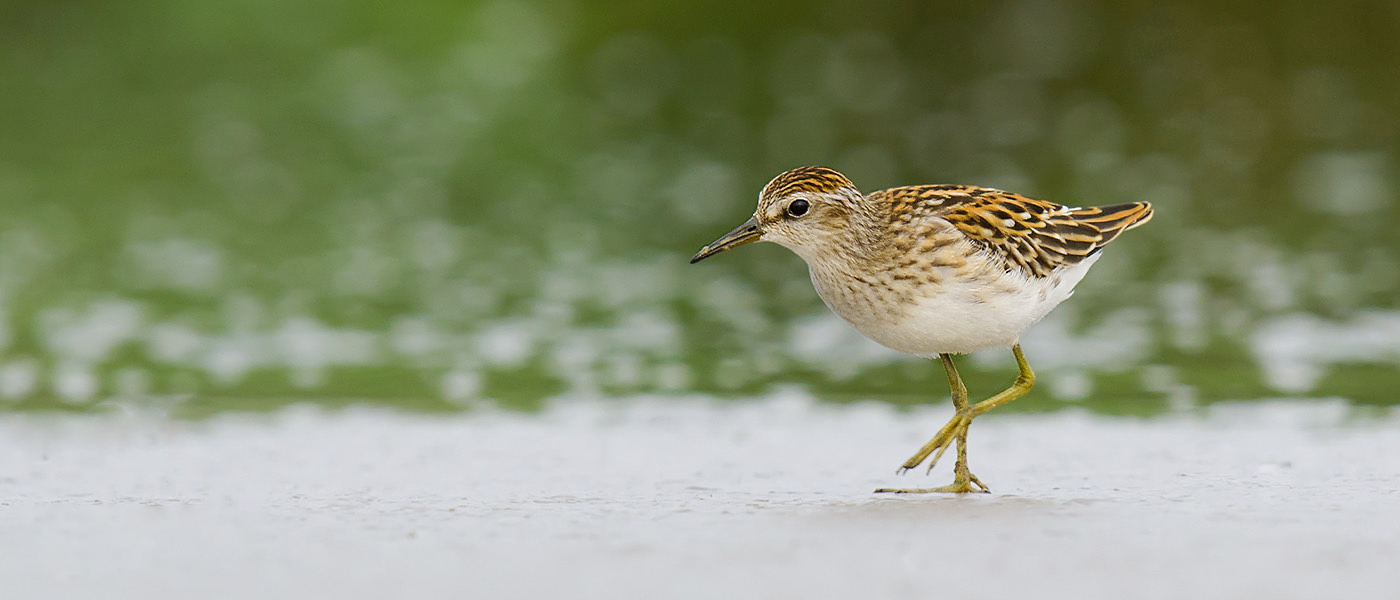
by Craig Brelsford
Founder, shanghaibirding.com
Long-toed Stint Calidris subminuta is a common migrant along the Chinese coast. Regularly recorded inland. Winter records from Guangxi, Guangdong, and Hainan; also Taiwan. HABITAT & BEHAVIOR Migrants prefer freshwater and brackish coastal habitats with vegetation but can occasionally be found on mudflats. Usually seen singly or in small groups. ID & COMPARISON Small, but slightly larger than very similar Least Sandpiper C. minutilla; more slender and longer-necked than Least, with longer legs and toes. Both species have long tertials covering wing tip, and hence show no primary projection. Least Sandpiper is slightly smaller and less bright and has a fainter white eyebrow that does not split; eyebrow of Least reaches bill and forehead, isolating the dark lores, but in Long-toed dark forehead meets lores at base of bill, and hence supercilium does not reach base of bill. Juvenile and non-breeding Long-toed resemble miniature Sharp-tailed Sandpiper C. acuminata. Breeding adults have black-streaked, rufous crown that extends to base of bill. Very narrow black lores. White supercilium, often split over eye, extends between lores and crown. Face, neck, and breast streaked brown or black. Mantle, scapulars, coverts, and tertials mainly black with rufous fringes and white tips (prominent white “mantle-V” in juveniles). Underparts in all plumages white. Non-breeding adult grey above, with dark-centered feathers fringed greyish-brown. Juvenile similar to adult, but brighter; has dark ear patch. Long legs yellow or green; in flight, toes trail behind tail; narrow white wing bar and white uppertail coverts divided by black central band from rump to tail. BARE PARTS Bill black, with pale base to mandible. VOICE Soft, liquid flight call. — Craig Brelsford
THE CALIDRIDS OF CHINA
shanghaibirding.com covers every species in the genus Calidris in China. Click any link:
Great Knot Calidris tenuirostris
Red Knot C. canutus
Ruff C. pugnax
Broad-billed Sandpiper C. falcinellus
Sharp-tailed Sandpiper C. acuminata
Curlew Sandpiper C. ferruginea
Temminck’s Stint C. temminckii
Long-toed Stint C. subminuta
Spoon-billed Sandpiper C. pygmaea
Red-necked Stint C. ruficollis
Sanderling C. alba
Dunlin C. alpina
Rock Sandpiper C. ptilocnemis
Baird’s Sandpiper C. bairdii
Little Stint C. minuta
Least Sandpiper C. minutilla
White-rumped Sandpiper C. fuscicollis
Buff-breasted Sandpiper C. subruficollis
Pectoral Sandpiper C. melanotos
Western Sandpiper C. mauri
ACKNOWLEDGEMENTS
Daniel Bengtsson served as chief ornithological consultant for Craig Brelsford’s Photographic Field Guide to the Birds of China, from which this species description is drawn.
BIBLIOGRAPHY
Alderfer, Jonathan, ed. (2006). National Geographic Complete Birds of North America. National Geographic Society, Washington, D.C.
Brazil, Mark (2009). Birds of East Asia. Princeton University Press, New Jersey.
Brazil, Mark (2018). Birds of Japan. Helm Field Guides, London.
eBird (2021). eBird: An online database of bird distribution and abundance [web application]. eBird, Cornell Lab of Ornithology, Ithaca, New York. Long-toed Stint (https://ebird.org/species/lotsti). Accessed: 26 March 2024.
MacKinnon, John & Karen Phillipps (2000). A Field Guide to the Birds of China. Oxford University Press.
Message, Stephen & Don Taylor (2005). Waders of Europe, Asia and North America. Helm Field Guides, London.
Svensson, Lars, Killian Mullarney, & Dan Zetterström (2009). Collins Bird Guide: The Most Complete Guide to the Birds of Britain and Europe. 2nd ed. HarperCollins, London.

